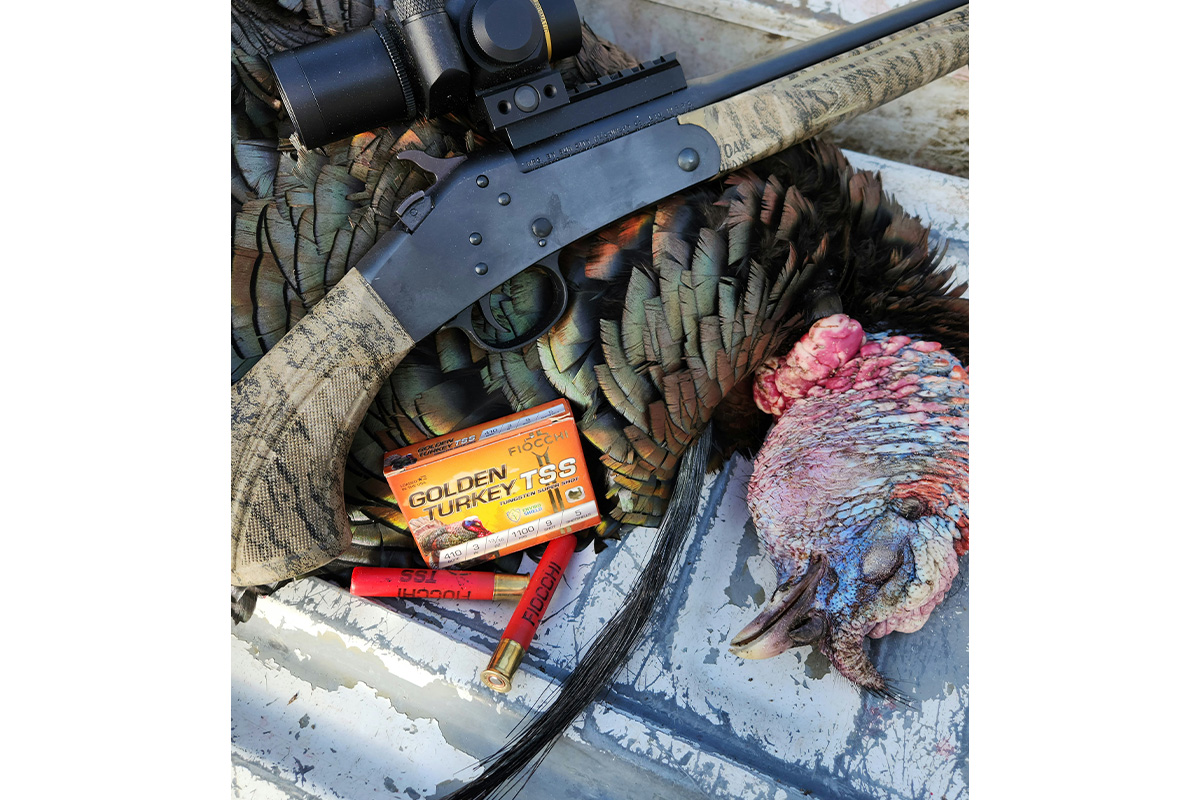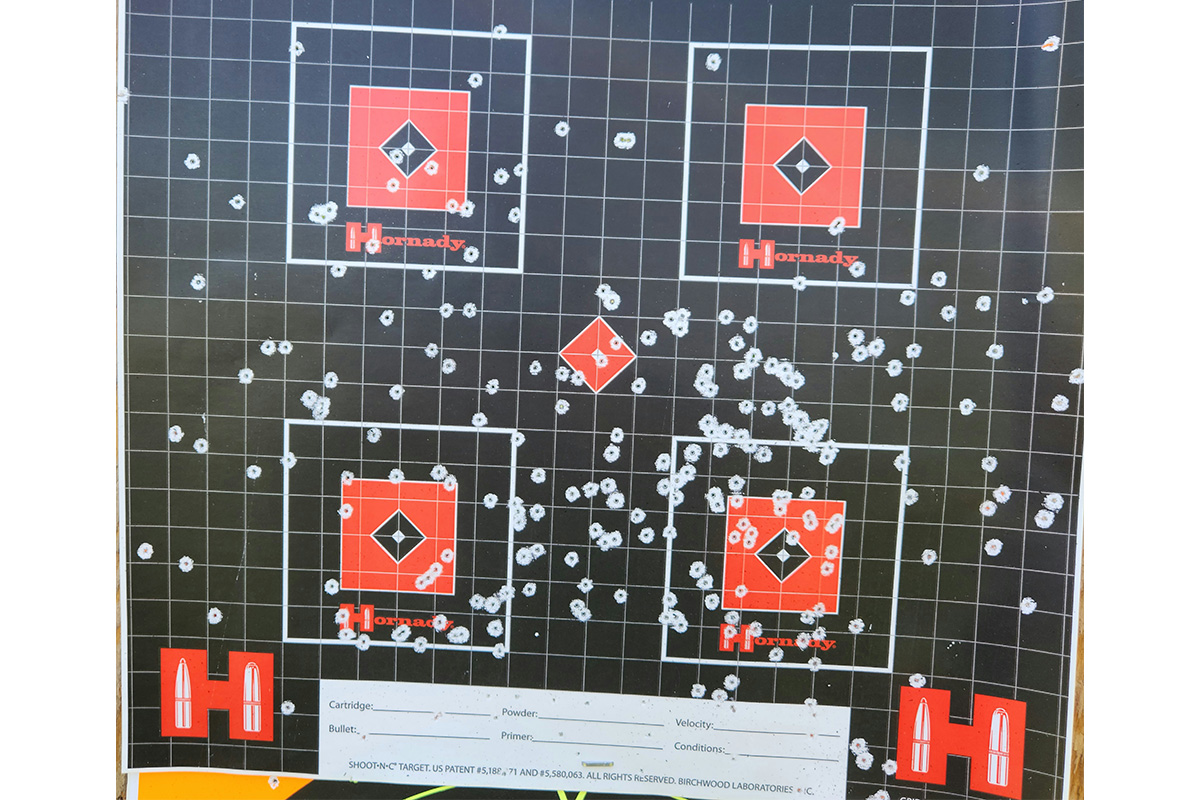
The first time I saw a .410 turkey guy, it was in the hands of my friend Jason Hart. Jason is a turkey hunter of no small repute. In fact, Jason is infected with the gobbleritis so badly that I can’t even count all the World Slams he has taken using all gauges, from 12 to .410.
Jason had travelled to my home on California’s Central Coast about five years as my state was the only one with a turkey population in which he had not taken a bird. I was incredulous when he pulled his gun out of its slip. It was a Remington 870 in .410!
“You’re not going to use that are you?” I asked. “Sure, why not? I’ve taken plenty of birds with it out past fifty-yards.” “How the heck are you going that?” I asked. “I load my own tungsten shells.” Jason responded.
Turns out, Jason had been handloading tungsten shot he imported from China into his own hulls for several years. The key to that kind of expended range capability and extremely dense patterns Jason had developed lay with the combination of super heavy shot and the tiny, #9 pellets he stuffed into his loads.
My next experience with the .410 bore being used on gobblers was a hunt I was on last year in Wyoming’s Black Hills. My buddy Christian Hogg of Fiocchi USA had brought along some of their new .410 Golden Turkey TSS loads for trial. Their 3-inch hulls are packed with 13/16 ounce of #9 shot that leaves the muzzle at 1,100 fps. One of the hunt’s participants, an attractive, diminutive lady who owns Crossbreed Holsters, was going to use them for her hunt. The 30-yard patterns the loads created impressed the hell out of me and I vowed that when given the chance, I was going to give them a go for myself.
So, this year, that is exactly what I did! Christian had given me two boxes of the Fiocchi .410s as I left camp last year. What I needed now was a gun.
I turned to Beth Shimanski over at Savage Arms and requested a little Steven’s Model 301 Turkey, a singleshot, break-action. These value-packed shotguns come equipped with a 26-inch barrel and an extended turkey choke. You can choose from several camo patterns and earth-tone solids for the buttstock and fore-end. In addition, they are optics ready with a rail mounted up top for scope or dot sight accessorizing.
This little gun is cute as hell, light and fast to the shoulder. I mounted one of my favorite turkey sights, the now-discontinued Leupold 1x14mm Prismatic with illuminated circle/dot/crosshair reticle. I don’t know for the life of me why these sights didn’t catch on, but they are light, compact and have top and side-mounted turrets for easy ½ moa adjustments.
It was time to move down to the range for some patterning. Now, TSS loads of all stripes are known for their effectiveness, but they don’t come cheap. As I only had ten rounds, I started by shooting a Remington high-brass 3” lead shell holding #7 ½ shot. After setting out some targets at the 30-yard mark I sat down at the bench and let loose with my first round. Upon examination of the target, I was pleased to see that the center of the pattern printed low, but that the windage was spot on. I made a course elevation adjustment on the sight, popped a Fiocchi TSS into the chamber, selected a new target, and let it rip.

Wow, what a difference between the lead #7 1/2s and the #9 TSS! The lead load had put some pellets into sweet spot, but patten density was thin. The Fiocchi’s TSS hammered two-thirds more pellets into the kill zone. This was with the extended turkey choke that came with the gun. I know for a fact that custom chokes, like the “Head Hunter” from JEBS Choke Tubes gin up even more impressive performance. With the pattern results in, it was time to hunt.
Our out of the ordinary torrential spring rains and frosty mornings didn’t appear to slow down the breeding season for our Rios. My local birds began gobbling in earnest in early February and by mid-March, two weeks prior to our opener, the hens were already setting for the toms. Henned-up tight as they were, it was a tough couple of weeks until the hens began to move off to find nesting sites and the boys set their hopes on new girlfriends.
My persistence paid off when my calling just before Easter finally moved a Tom from the neighbor’s property where he had been shacked-up for weeks toward my own property line. Finding a spot in some heavy shade on the side of a small rise, I sat down against a tree and began my serenade in earnest. It didn’t take much. This boy was fired up and ready to do the wild thing.
When the gobbler crested the rise in front of me, I realized that this snowball-head wasn’t the impatient jake I was expecting. I centered his head smack in the middle of the Leupold’s circle reticle and squeezed the Steven’s trigger. The big Tom dropped instantly to the shot like he’d been whacked by a Louisville slugger. A couple of wing beats and that was all she wrote. His nine-inch beard and one-inch spurs confirmed he was a mature Tom and I could not have been more pleased.

Walking up to him, I turned back and lased the distance back to my tree. The LED in my Leica Geovid Pro Compact RF binos called it at 28 yards. Proving once again that modern materials and technologies are making hunting arms and ammo exponentially more effective than anyone would have imagined when I first began turkey hunting forty years ago. If you are looking for a great spring challenge, the time has come to “go small” for great results!






![Air gun 101: The differences between .177 & .22 – Which jobs they do best ? [Infographic]](https://airgunmaniac.com/wp-content/uploads/2020/09/g44-218x150.jpg)



































